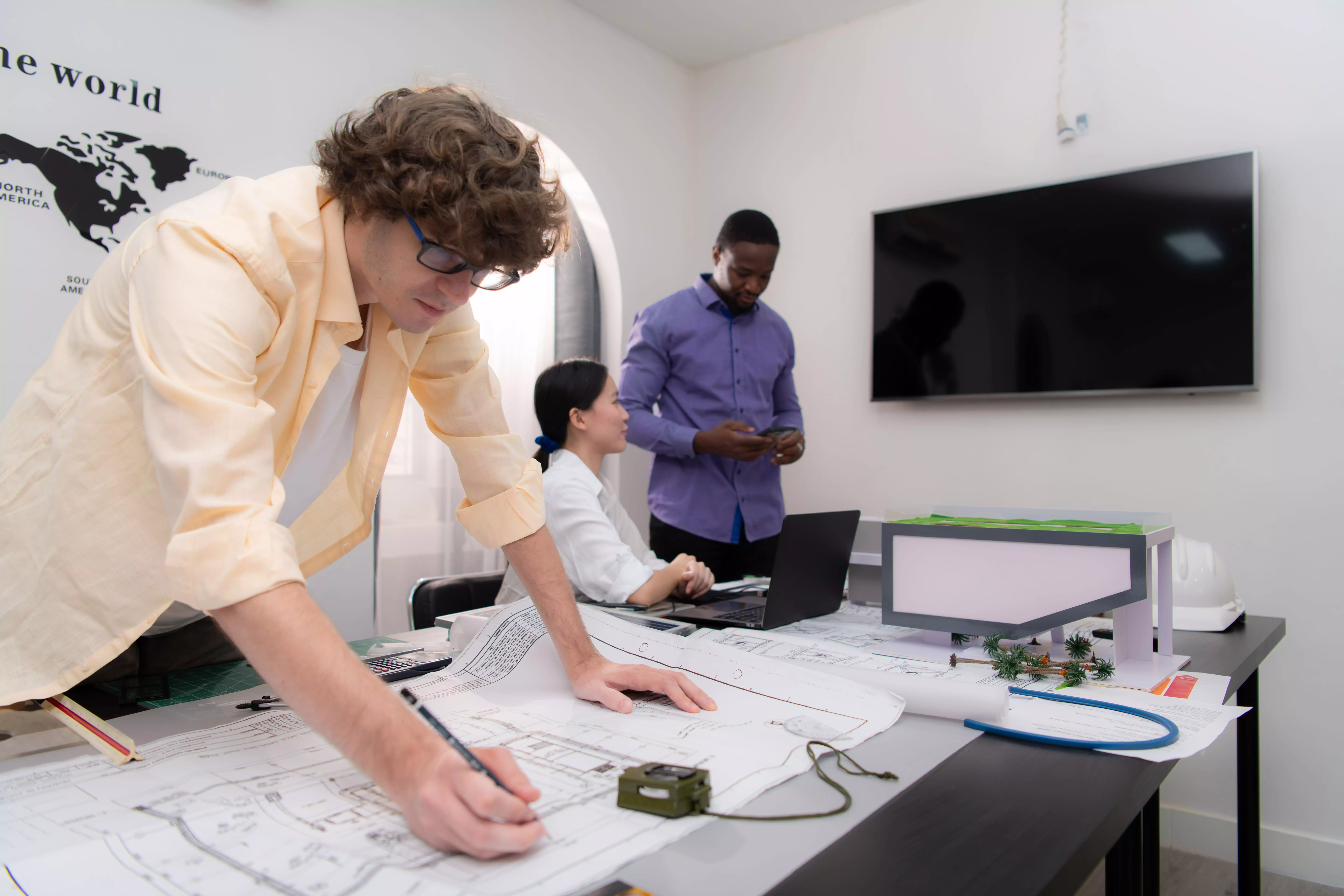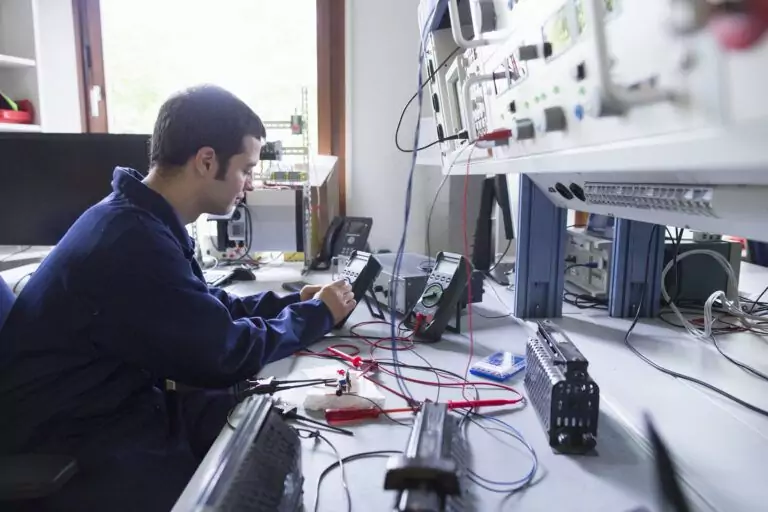Are you an electrical designer looking to dazzle potential employers or clients with your skills and creativity? Crafting an impressive portfolio is your ticket to standing out in this competitive field. Your portfolio is more than just a collection of your past projects; it’s a reflection of your expertise, your innovative solutions to complex problems, and your dedication to the craft.
Whether you’re showcasing circuit designs, PCB layouts, or your prowess with CAD tools, each element of your portfolio should narrate the story of your professional journey and accomplishments. This article will guide you through what to include in your portfolio, from project summaries and design drawings to software proficiency and personal design philosophy. Plus, we’ll share tips on how to structure your portfolio for maximum impact and choose the right format to showcase your work.
Ready to create a portfolio that not only highlights your technical achievements but also positions you for your next electrical designer role? Let’s dive in!
What Should Be Included in an Electrical Designer’s Portfolio?
An electrical designer’s portfolio is a critical tool that showcases their expertise, creativity, and problem-solving skills to potential employers or clients. To effectively demonstrate these qualities, the portfolio should include several key elements:
- Project Summaries: Incorporate detailed descriptions of projects you’ve contributed to, emphasising your objectives, role, challenges encountered, and the innovative solutions you implemented. This section showcases not just your technical skills but also your ability to tackle complex problems.
- Design Drawings and Schematics: Feature high-quality images or digital copies of your electrical designs, schematics, and wiring diagrams. These visuals serve as a testament to your technical proficiency and meticulous attention to detail.
- Software Proficiency: List the electrical design and analysis software you are proficient in, such as AutoCAD Electrical, SolidWorks Electrical, PSpice, etc. This demonstrates your capability to utilise industry-standard tools efficiently.
- Certifications and Education: Detail your relevant degrees, certificates, and licenses, including any Bachelor’s degree in Electrical Engineering, CAD certification, or professional engineering licenses. This information underscores your formal training and qualifications in the field.
- Client Testimonials and References: Incorporating positive feedback from previous employers, clients, or colleagues can significantly boost your portfolio’s credibility. It provides a glimpse into your work ethic, teamwork, and communication skills from the perspective of those who have directly engaged with your work.
- Awards and Recognitions: Highlight any industry awards or recognitions you have received for your innovative designs or contributions to projects. This section shines a light on your excellence and dedication to advancing in the field of electrical design.
- Personal Design Philosophy: Include a brief statement or essay that articulates your approach to electrical design, your strategies for problem-solving, and your commitment to sustainability or safety standards. This personal touch gives insight into your professional ethos and values, setting you apart in the competitive job market.
By thoughtfully compiling these elements, an electrical designer can craft a compelling portfolio that not only highlights their technical achievements and accolades but also reflects their unique career path and contributions to the electrical design industry. This portfolio then becomes a dynamic representation of the designer’s potential for future success and innovation in their field.
Projects Showcasing Circuit Design
An electrical designer’s portfolio must effectively highlight their circuit design capabilities, divided into specialised areas to showcase a broad spectrum of skills:
Analogue Circuits
Projects in this category should demonstrate the designer’s expertise in creating and implementing analogue circuits. This could include designs for signal processing, power supply circuits, or analogue sensor interfaces, showcasing the designer’s grasp of real-world analogue applications and their ability to navigate the nuances of analogue electronics.
Digital Circuits
This section should feature projects that emphasise the designer’s skill in digital circuit design. It could cover areas such as microcontroller-based systems, digital signal processing, or digital communication interfaces, highlighting the designer’s proficiency in crafting solutions that require intricate digital logic and integration of software with hardware components.
Examples of PCB Layout Designs
A well-rounded portfolio also delves into the designer’s proficiency in PCB layout design, an essential skill in the field:
Single-layer PCBs
Demonstrate your ability to efficiently design single-layer PCBs, emphasising your skill in component placement and trace routing within the constraints of a single conductive layer. This showcases your capability to innovate and execute designs effectively under restrictive conditions.
Multi-layer PCBs
Include multi-layer PCB designs to display your competence in managing complex circuits that necessitate multiple layers for signal integrity, power distribution, and component placement. This section highlights your advanced PCB design skills and your adeptness at addressing and solving complex design challenges.
Software Proficiency Demonstrations
Your portfolio should clearly articulate your proficiency with key design and simulation software tools, which are pivotal in the field:
CAD Tools like AutoCAD or Eagle
Illustrate your expertise in using CAD tools such as AutoCAD or Eagle through detailed drawings, schematics, and PCB layouts. This demonstrates not only your technical skill in using these tools but also your ability to visualise and realise intricate electronic designs.
Simulation Software like LTspice
Showcase your use of simulation software like LTspice for modelling and testing circuits pre-implementation. This emphasises your proactive approach to design validation and optimisation, showcasing your commitment to excellence and efficiency in your designs.
Problem-solving Examples
A critical aspect of your portfolio should be dedicated to highlighting your problem-solving prowess:
Troubleshooting Faulty Circuit Designs
Provide detailed examples or case studies where you’ve successfully identified and remedied issues within circuit designs. This section should underscore your analytical abilities and your knack for diagnosing and rectifying complex problems, ensuring functionality and reliability.
Optimising Designs for Efficiency
Feature instances where you’ve enhanced the efficiency of a design, whether through reducing power consumption, minimising component count, or optimising the layout for improved performance. This illustrates your ingenuity and dedication to not only meeting but exceeding design standards for efficiency and performance. By meticulously organising these sections within your portfolio, you underscore a comprehensive skill set that spans the critical domains of electrical design, from conceptualisation through optimisation. This structured approach not only showcases your technical expertise but also your strategic thinking and problem-solving capabilities, positioning you as a well-rounded and proficient electrical designer.
Why is a Portfolio Important for Electrical Designers?
A portfolio acts as a critical tool for electrical designers, serving multiple pivotal roles in their career development and professional showcasing.
In essence, a portfolio is not just a collection of work; it is a strategic asset. It conveys a designer’s technical competence, creativity, and problem-solving skills, making it an indispensable component of their professional toolkit.
Demonstrates Technical Skills and Creativity
A portfolio is a powerful showcase of an electrical designer’s technical skills and creative prowess. It highlights their expertise in circuit design, PCB layouts, and proficiency with CAD tools and simulation software, illustrating their innovative solutions to complex engineering challenges. This not only demonstrates their technical capabilities but also showcases their creative approach to problem-solving in electrical design.
Helps in Standing Out in Job Applications
In the competitive realm of electrical design, a well-curated portfolio serves as a key differentiator in job applications. It provides a tangible showcase of the designer’s previous projects and accomplishments, enabling them to stand out to potential employers. By effectively highlighting their unique skills and experiences, designers can position themselves as the ideal candidate for the job, making a compelling case for their selection.
Essential for Freelance or Consulting Work
For those venturing into freelance or consulting in the field of electrical design, a portfolio is indispensable. It acts as a marketing tool, showcasing their capabilities and achievements to potential clients. A comprehensive and well-presented portfolio not only builds credibility but also instils confidence in clients, proving to be a crucial factor in securing projects and establishing a successful freelance or consulting career.
How to Structure an Electrical Design Portfolio?
Structuring an electrical design portfolio effectively is paramount to showcasing your capabilities and achievements in a coherent and impactful manner. The organisation of content should thoughtfully demonstrate both the breadth and depth of your skills, as well as your problem-solving prowess.
By carefully structuring your portfolio in this manner, you effectively communicate not just your technical expertise but also your growth as a professional, your creativity, and your ability to evolve and tackle progressively challenging projects. This strategic approach ensures that your portfolio not only captures the attention of potential employers or clients but also leaves a lasting impression of your capabilities and potential.
Organise by Project Complexity
Organise your portfolio to demonstrate a clear progression from simple to more complex projects. This methodical approach showcases your ability to handle a diverse range of technical challenges, illustrating your growth and versatility as an electrical designer.
Start with Simple Projects
Initiate your portfolio with projects that highlight foundational skills and basic design principles. Starting with simpler projects sets a solid foundation, showcasing your grasp on the essentials of electrical design.
Progress to More Complex Designs
Gradually introduce projects that showcase your ability to tackle intricate and advanced design challenges. This section should highlight your proficiency in complex problem-solving and your capacity for innovation, showcasing your skills in a progressively challenging context.
Include Project Descriptions and Outcomes
Each project should be accompanied by a detailed description, including:
Brief Project Overview
Provide a concise summary of the project, detailing its objectives and your specific role. This context is crucial for understanding the scope of your involvement and the challenges you faced.
Specific Results Achieved
Emphasise the tangible outcomes and successes of your work. Detailing the specific results achieved showcases the impact of your contributions and highlights your effectiveness in achieving project goals. By thoughtfully structuring your portfolio in this manner, you not only communicate your technical expertise and creativity but also effectively demonstrate the value you can bring to future projects, making your portfolio a compelling showcase of your professional journey and capabilities.
What Formats are Best for an Electrical Designer’s Portfolio?
Choosing the right format for an electrical designer’s portfolio is pivotal in effectively showcasing their work and skills.
Each of these formats offers unique advantages, and the best choice may depend on the designer’s specific goals, the nature of their work, and the audience they aim to reach. Combining multiple formats can also be a strategic approach to maximise reach and impact.
Digital Portfolios
Digital portfolios offer a dynamic and interactive way to showcase an electrical designer’s projects. They can incorporate multimedia elements such as images, videos, and hyperlinks, providing a rich, comprehensive view of the designer’s skills and achievements.
Personal Websites
A personal website acts as a centralised platform for an electrical designer’s professional presence. It allows for complete customisation in the presentation and organisation of work, enabling designers to craft a narrative that best represents their projects and expertise.
Online Portfolio Platforms like Behance
Platforms like Behance are invaluable for electrical designers seeking exposure within a professional community. These platforms not only facilitate the showcasing of projects but also offer networking opportunities with peers and potential employers, enhancing visibility and engagement.
PDF Documents
PDF documents offer a universally accessible format that preserves the portfolio’s design integrity across different viewing platforms. Ideal for compiling detailed project information, PDFs ensure that the presentation of work remains consistent, regardless of the device used to view it.
Tips for Creating an Impactful Electrical Design Portfolio
Creating a compelling electrical design portfolio involves more than just showcasing your work; it’s about telling a story of your skills, creativity, and problem-solving abilities.
By following these tips, you can create an electrical design portfolio that not only highlights your technical abilities and achievements but also effectively communicates your unique value proposition to potential employers or clients, making it a powerful tool in your professional development.
Highlighting Unique Challenges and Solutions
Emphasise projects that posed unique challenges. This not only demonstrates your capability to tackle complex issues but also showcases your innovative approach to problem-solving.
Describe the Problem
Clearly articulate the problem you encountered in each project. Providing a detailed context sets the stage for showcasing the complexity and your analytical approach to identifying the issue.
Explain Your Innovative Solution
Detail the innovative solutions you devised to overcome the challenges. This section should highlight your technical prowess and creative thinking, showcasing your ability to deliver effective results.
Include Testimonials from Clients or Team Members
Incorporate testimonials that reflect on your work ethic and collaboration. Personal endorsements add a layer of credibility and offer insights into your professional demeanour and the impact of your work.
Quotes on Your Work Ethic
Feature quotes that specifically commend your dedication, reliability, and professionalism. Highlighting these aspects underscores your commitment to excellence and your value as a team member.
Praise for Your Technical Solutions
Include praise focusing on the ingenuity and effectiveness of your technical solutions. This emphasises your expertise and success in delivering innovative solutions in electrical design.
How to Use Your Portfolio to Secure Job Opportunities or Clients
To maximise the effectiveness of your portfolio in securing job opportunities or attracting clients, follow these strategic steps:
Tailoring the Portfolio to the Job or Client Needs
Customise your portfolio to specifically align with the interests and requirements of the job or client. This targeted approach ensures your showcased work directly resonates with their needs.
Research the Company or Client
Undertake detailed research to gain a deep understanding of the company’s or client’s projects, challenges, and organisational culture. This insight allows you to accurately tailor your portfolio to highlight how your skills and experiences can meet their objectives.
Highlight Relevant Projects and Skills
Carefully select projects and skills that demonstrate your ability to address the company’s or client’s specific needs. Focusing on relevant achievements showcases your direct suitability and potential contributions.
Leveraging Online Platforms to Showcase Your Work
Utilise the power of online platforms to increase the visibility of your portfolio and connect with potential employers or clients.
LinkedIn for Professional Networking
Use LinkedIn as a strategic tool for professional networking. It enables you to engage with industry peers, potential employers, and clients, significantly enhancing the reach and impact of your portfolio.
GitHub for Sharing Code and Technical Documentation
GitHub is invaluable for sharing code samples and technical documentation. It offers a comprehensive view of your technical expertise and problem-solving capabilities, providing a deeper insight into your professional abilities.
Bringing Your Designs to Life with Confidence
An electrical design portfolio is more than a showcase; it’s your professional narrative. By highlighting your project experience, technical tools, problem-solving approach, and unique design perspective, you create a compelling story that resonates with employers and clients alike. This article has outlined how to structure, present, and leverage that story to open doors and elevate your career.
At Vista Projects, we recognise the value of thoughtful, well-executed electrical design. Our integrated engineeringThe process of integrated engineering involves multiple engineering disciplines working in conjunction with other project disciplines to e... teams support complex infrastructure with precision, innovation, and a commitment to quality that mirrors what great portfolios reflect.
Want to build your portfolio on real-world impact? Reach out to Vista Projects and put your design skills to work on projects that matter.









